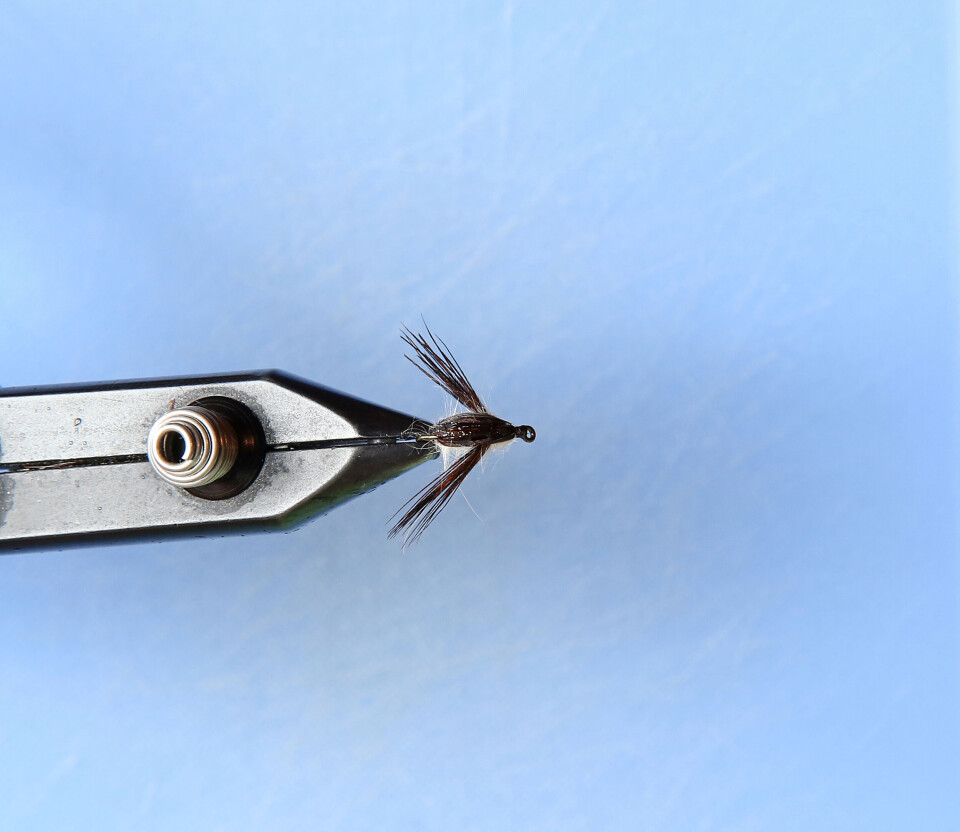The fly in the pool
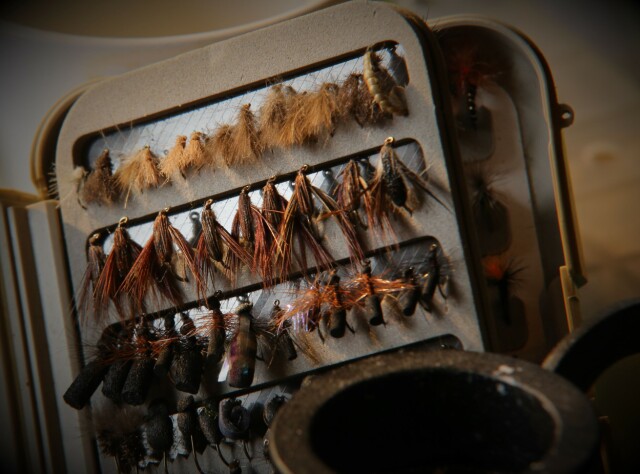
Anders Sveen Hansen warmed up for the fishing season when he noticed movement in a tiny pool in the marsh. This is the fly that enticed that trout to rise.
The video “Trout in the pool” (Ørret i kulpen) became a hit on YouTube. This is the fly that enticed that trout to rise.
Written by Lars Reitan.
Anders Sveen Hansen from Nittedal warmed up for this fishing season in 2012 with a quick trip to Tærudtjerna in Romeriksåsen. With his GoPro mounted on his forehead he noticed movement in a tiny pool in the marsh. He grabbed his 3 wt and took a quick cast. The trout ate almost instantly and took off underneath the marsh.
– I was totally surprised, not only that there was a trout in that tiny pool, but one of that size made the situation even more special.
He uploaded the video just to show some friends… but now the video «Ørret i kulpen» has almost 15 million views on YouTube.
Cracking the code
This catch was not just lucky. First Sveen had to crack the code to figure out what the trout in this system were feeding on.
– It start with the fish denying everything I threw at them. I was sitting on the edge of the marsh, and pondering what they could possibly be eating. Just in front of me I saw a water boatman (corixidae) come up to breath. I studied the speed and how it moved, and figured out that must be why they took so hard on the surface.
So Anders did the only logical thing to do at a time like this… he went home to tie up some flies. The “Buksvømmeren” was the result.
– I tied up three variations with different materials. The fly with pheasant tail was the easiest to tie, had the best movement, and looked the most natural. By using a bit heavier hook you don’t need to weight this fly. Since this fish were taking so aggressively and since pheasant tail isn’t the most durable material out there, you should tie them up with some superglue.
Water boatmen
Water Boatmen (Corixidae) live primarily on the bottom of lakes, where they feed on plants with their front legs. They swim upright and often come up to the surface to breath air.
Anders recommends trying this fly out in warm forest lakes.
– When trout are feeding on these they take hard and brutal. Strip the fly hard 10-15 cm at a time, pausing between each strip.
“Buksvømmeren”
- Thread: Dark brown Uni 8/0
- Hook: Mustad S82 size 14
- Body: Light hares ear dubbing
- Ribbing: Thin copper thread.
- Back and legs: Pheasant tail
How to tie it:
1. Tie in the copper thread and a thick piece of feasant tail for the back.
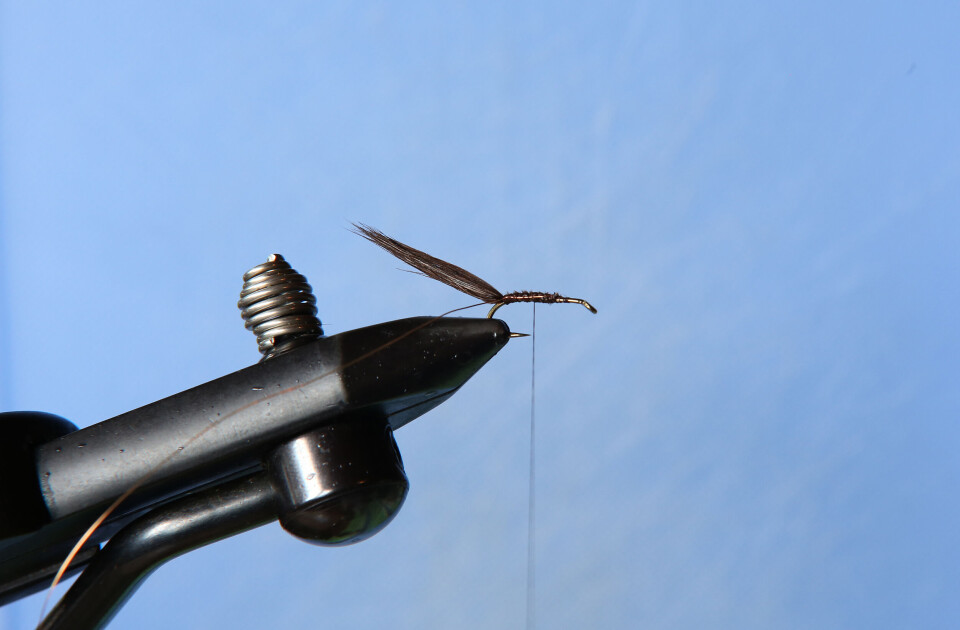
2. Dub 2/3 of the hook shaft and rib it with the copper thread.
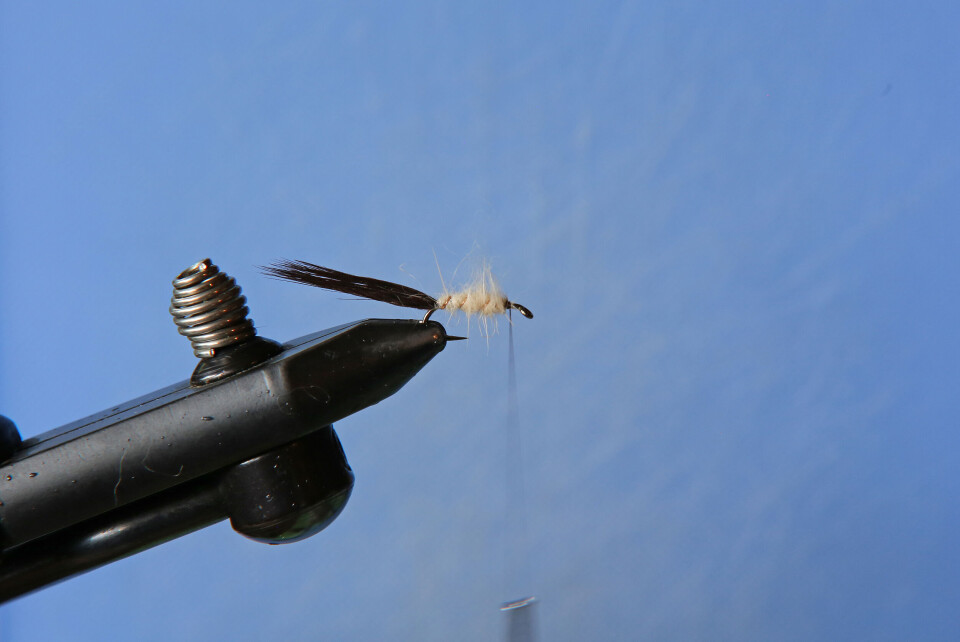
3. Tie the legs out to each side (use the tip of the fibers).
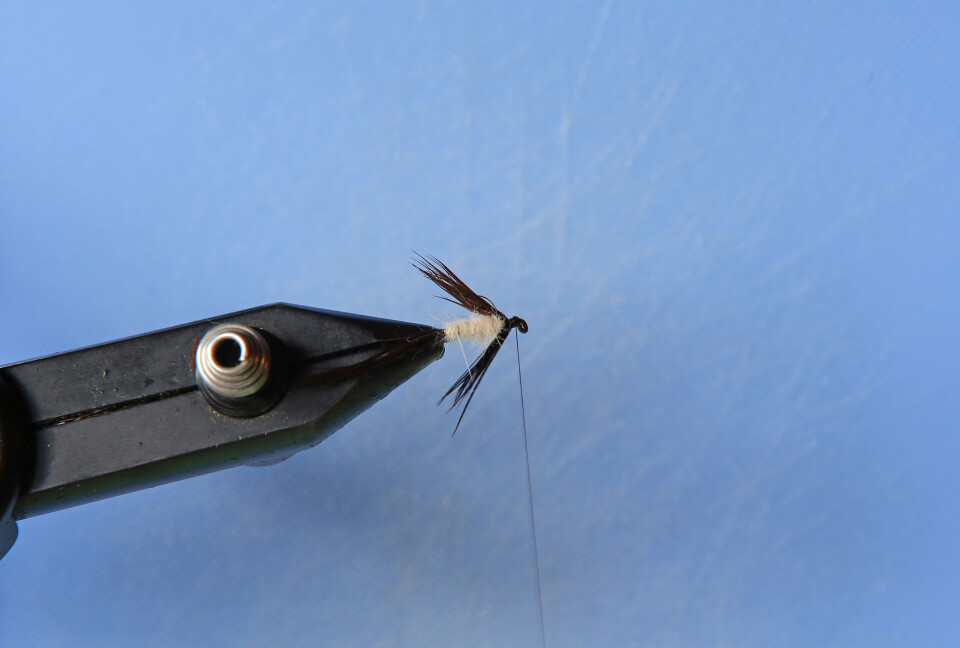
4. Dub the rest of the fly and start with a couple of wraps of dubbing behind the legs.
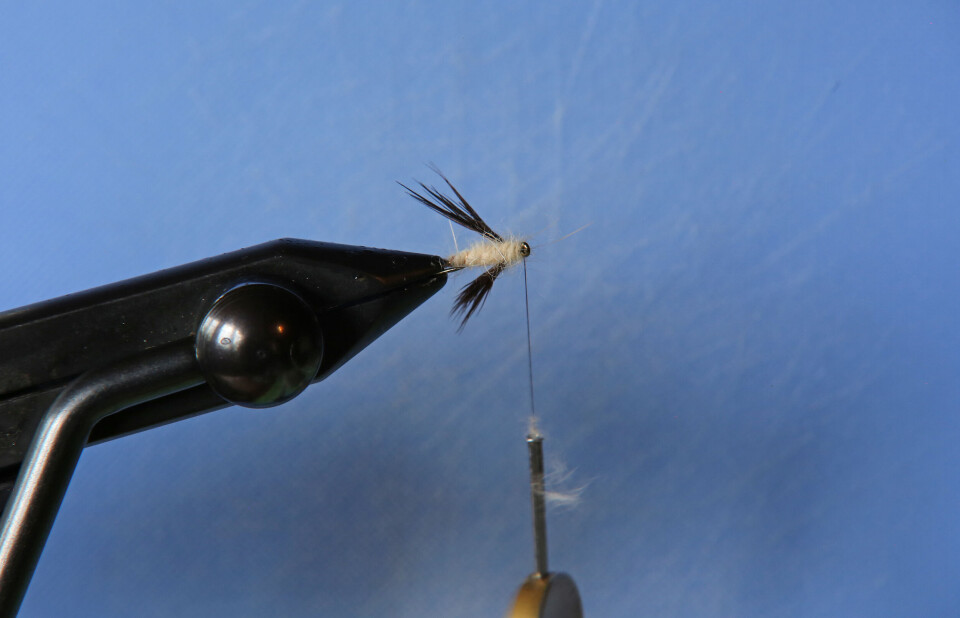
5. Tie in the back.
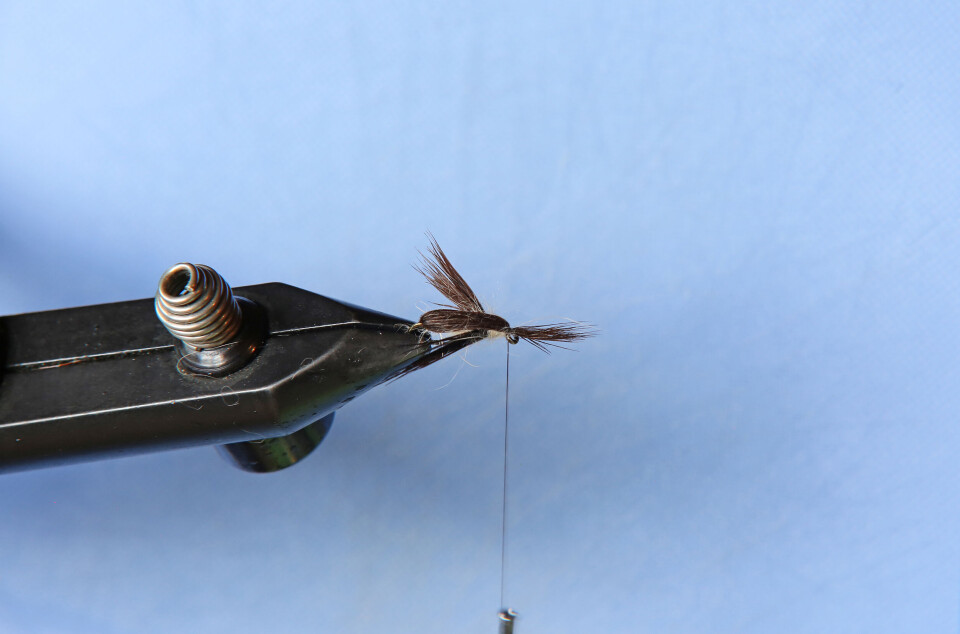
6. Finish up with a couple of small drops of super glue on the back.
